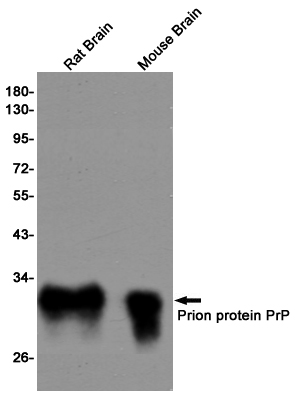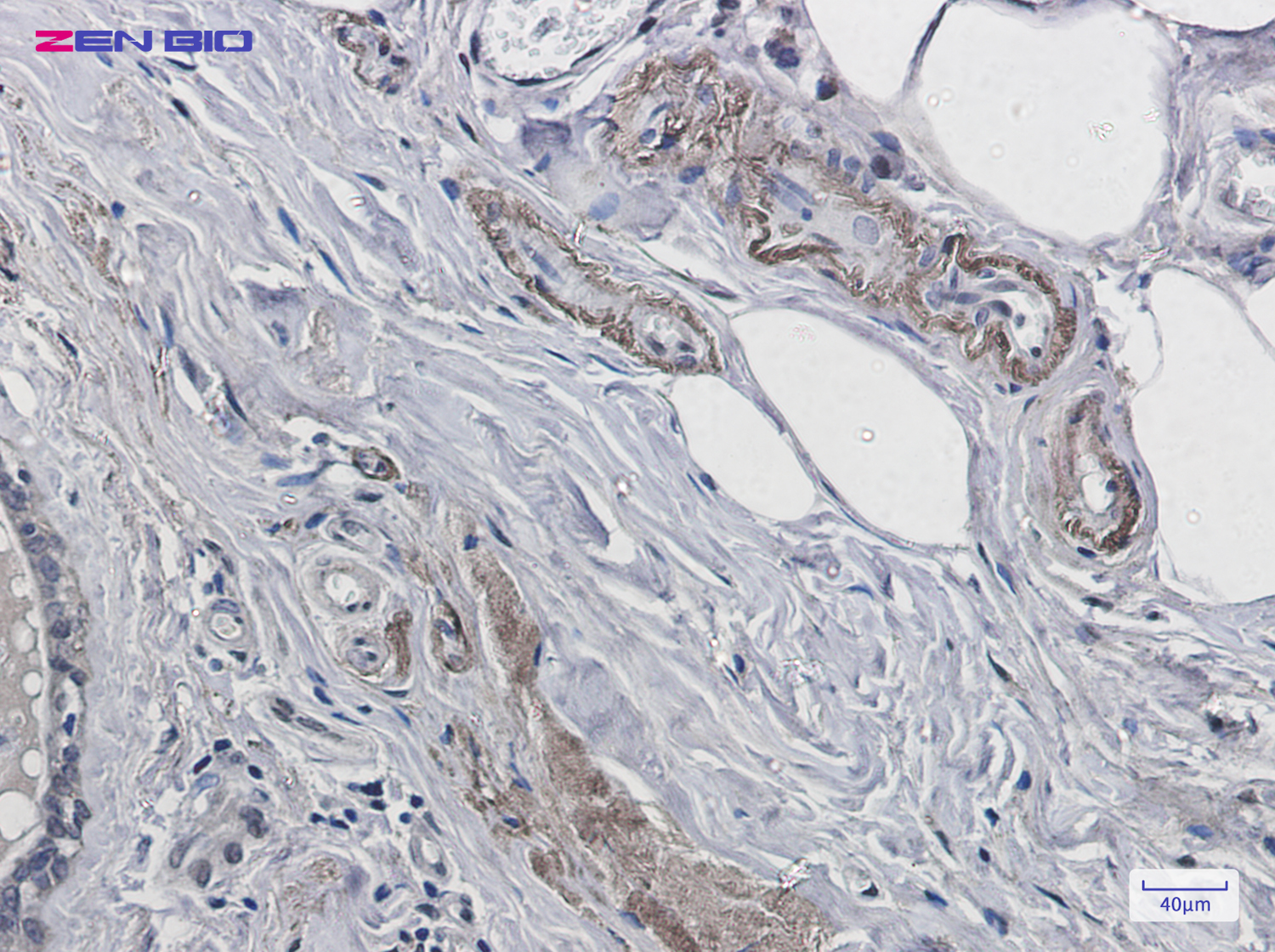-
Product Name
Anti-Prion protein PrP Rabbit antibody
- Documents
-
Description
Prion protein PrP Rabbit polyclonal antibody
-
Tested applications
WB, IHC-P, ICC/IF, FC
-
Species reactivity
Human, Mouse, Rat
-
Alternative names
CJD; GSS; PrP; ASCR; KURU; PRIP; PrPc; CD230; AltPrP; p27-30; PrP27-30; PrP33-35C antibody
-
Isotype
Rabbit IgG
-
Preparation
Antigen: A synthetic peptide of human Prion protein PrP
-
Clonality
Polyclonal
-
Formulation
Supplied in 50nM Tris-Glycine(pH 7.4), 0.15M Nacl, 40%Glycerol, 0.01% sodium azide and 0.05% BSA.
-
Storage instructions
Store at -20°C. Stable for 12 months from date of receipt.
-
Applications
WB: 1/1000-1/5000
IHC: 1/20
ICC/IF: 1/20
FC: 1/50
-
Validations

Western blot detection of Prion protein PrP in Rat Brain and Mouse Brain lysates using Prion protein PrP rabbit pAb (1:1000 diluted).Predicted band size:28kDa.Observed band size:28kDa.

Immunohistochemistry of Prion protein PrP in paraffin-embedded Human breast cancer tissue using Prion protein PrP Rabbit pAb at dilution 1/20
-
Background
Swiss-Prot Acc.P04156.Its primary physiological function is unclear. May play a role in neuronal development and synaptic plasticity. May be required for neuronal myelin sheath maintenance. May promote myelin homeostasis through acting as an agonist for ADGRG6 receptor. May play a role in iron uptake and iron homeostasis. Soluble oligomers are toxic to cultured neuroblastoma cells and induce apoptosis (in vitro) . Association with GPC1 (via its heparan sulfate chains) targets PRNP to lipid rafts. Also provides Cu2+ or ZN2+ for the ascorbate-mediated GPC1 deaminase degradation of its heparan sulfate side chains .
Related Products / Services
Please note: All products are "FOR RESEARCH USE ONLY AND ARE NOT INTENDED FOR DIAGNOSTIC OR THERAPEUTIC USE"
